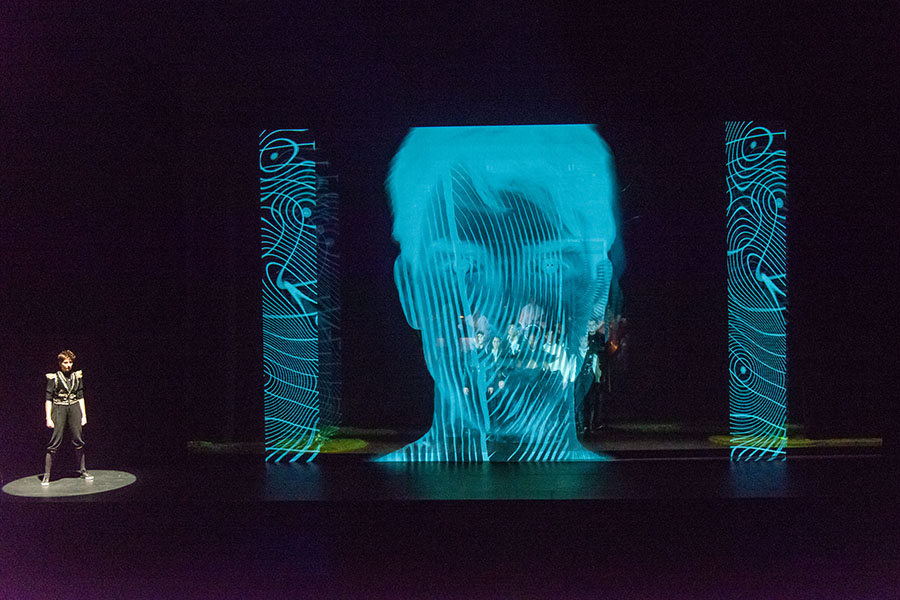Forging New Theatrical Experiences
School of Drama's Video & Media Design Program
written by
Shannon Musgrave
In the School of Drama’s fall production of "As You Like It," the world of the play was brought to life in part by media designer Julian Kelley. Kelley, a third year MFA student in Drama’s Video & Media Design (VMD) program, worked alongside the scenic designer and the lighting designer to create the visual landscape for the production. Relative to traditional theatrical design elements, media and projection is fairly new to the scene, but over the last decade or so, has become a vital component. Kelley is excited by the ways video, media and projection can enhance the storytelling of live theater by utilizing cinematic components, creating a more immersive experience for the audience.
"I use a lot of live camera work in my designs," he said. "Getting a close-up shot that’s projected really big behind the actors on stage creates this double effect where you see the stage action, but you can also see the emotions much more clearly, as if it were a film."
He used this type of effect in "As You Like It" during a scene in which a stage fight was shot live and projected behind the actors, giving the audience the intimacy of watching a televised fight with the energy of something live in real time. This kind of simultaneity is a hallmark of how video and media can enhance live theatrical events.

Kelley created his designs for "As You Like It" with AI-generated imagery using Deforum Stable Diffusion — an open-source machine-learning diffusion model. The use of AI art in theatrical design is a new frontier, and is proving a valuable tool for creators like Kelley. And he is quick with the distinction that it is just that — a tool. As AI art becomes increasingly popular, ethical issues around image iteration using artists’ original creations are emerging as a result. However, Kelley says, as an individual artist it is a useful way to streamline the workflow process, and a great tool for inspiration. It has also made him consider his artistic work through another lens.
"It’s really exciting to negotiate the very technical side of AI art — the coding side, and the parameters side — with a creative vision."
Julian Kelley
That technical/creative duality is built into the VMD program. Because the technologies and designs are so mutually dependent, students are taught system design and engineering at the same time that they are developing their creative design aesthetics; they are assigned both design and engineering roles for School of Drama productions throughout their time in the program. Kelley said that, although engineering is not necessarily a path he is interested in pursuing, his production assignments as an engineer have only given greater depth and specificity to his work as a designer.
With both BFA and MFA degrees, the VMD program’s flexible curriculum allows for students to build a unique course of study within and outside the School of Drama, depending on their individual interests and goals. In fall 2023, the program will make use of a newly renovated facility featuring a fully outfitted soundstage, digital stage and two production studios. The building will be used as a collaborative space between VMD and the School of Art’s Electronic & Time-Based Media (ETB) program.
VMD professor Lawrence Shea is developing new collaborative coursework with ETB professor Johannes DeYoung.
"We are really excited about this new facility. It’s going to change the curriculum and really expand our collaborations with the School of Art."
Lawrence Shea
Video & Media Design Professor, School of Drama
Nica Ross, VMD professor and director of The Frank-Ratchye STUDIO for Creative Inquiry, agrees. "It’s going to allow us to segment up the work with studios that can be doing multiple things at multiple times, which is something we haven’t had the affordance to do in the past."